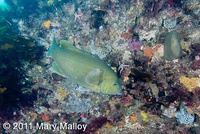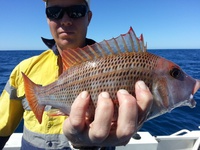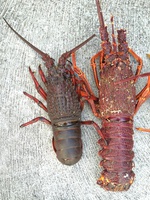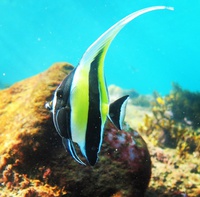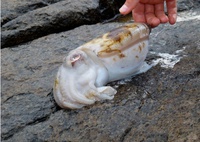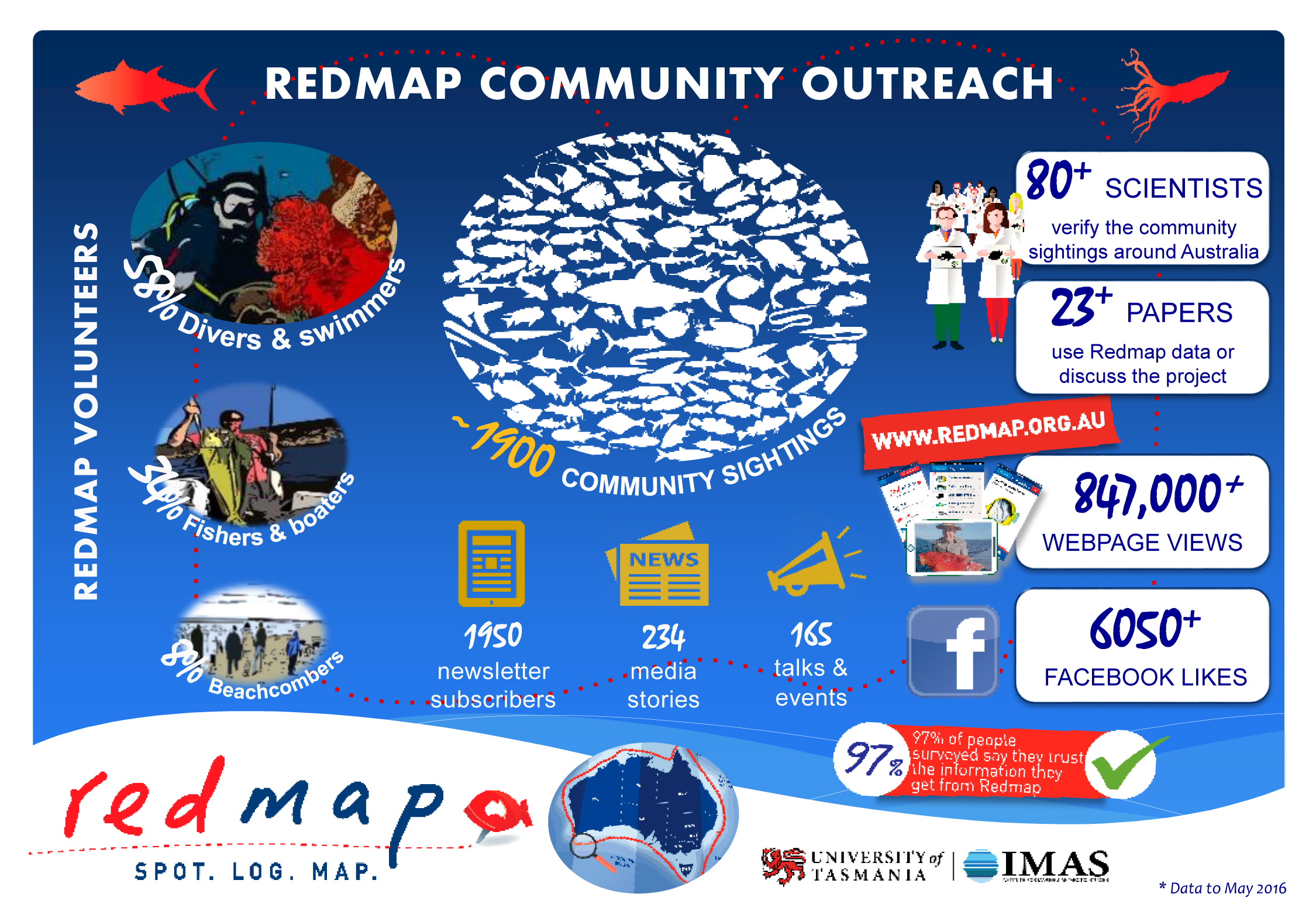Top 3 Redmap Sightings around Australia
The Redmap Team, 06 Jul 2016.
The redthroat emperor, eastern rock lobster and western blue groper all made it onto Redmap's Top 3 lists. Here is a snapshot of Redmap's community data.
-
VICTORIA'S most reported species was the western blue groper (Achoerodus gouldii) (Photo: Mary Malloy)
-
WESTERN AUSTRALIA'S most reported species was the redthroat emperor (Lethrinus miniatus). (Photo by 'jsmolly')
-
TASMANIA'S top species was the eastern rock lobster (Sagmariasus verreauxi). The lobster on the left is an eastern; the one on the right is the southern rock lobster (Jasus edwardsii). The eastern rock lobster is more common in mainland seas but these were caught south of Hobart by Alex Hunnibell.
-
NEW SOUTH WALES' most reported species was the Moorish Idol (Zanclus cornutus). We ask Redmap members to log this fish below Port Stevens to better map its distribution (Photo: Cheyne Ramsay)
-
QUEENSLAND'S most reported fish was Barramundi (Lates calcarifer). We ask Queenslanders to log this iconic fish if seen south of Bundaberg so we can gain a better understanding of its distribution. (Photo: Timothy Kusetic).
-
SOUTH AUSTRALIA's most sighted Redmap species was the giant cuttlefish (Sepia apama). Giant cuttlefish occur across southern Australia but aggregate to breed near Point Lowly in the Spencer Gulf. This is the only known breeding aggregation in the world for this species. We need more sightings to better assess its distribution (Photo: Andy Burnell).
Australians have shared more than 1900 sightings of marine life they considered uncommon at their local diving, fishing and swimming spots.
Top 3 Redmap Sightings per State
2. Whitebarred boxfish (Anoplocapros lenticularis)
3. White ear (Parma microlepis)
1. Redthroat emperor (Lethrinus miniatus)
2. Spangled emperor (Lethrinus nebulosus)
3. Common lionfish (Pterois volitans)
Tasmania:
1. Eastern rock lobster (Sagmariasus verreauxi)
2. Zebrafish (Girella zebra)
3. Yellowtail kingfish (Seriola lalandi)
New South Wales:
1. Moorish idol (Zanclus cornutus)
2. Brokenline wrasse (Stethojulis interrupta)
3. Threadfin butterflyfish (Chaetodon auriga)
Queensland:
1. Barramundi (Lates calcarifer)
(more community observations are needed from QLD fishers and divers!)
South Australia:
1. Giant cuttlefish (Sepia apama)
2. Leatherback turtle (Dermochelys coriacea)
(again, we need more citizen science data from SA divers, fishers and boaters!)
Many of these sightings were spotted out of their historical distributions; while others were valuable observations of rare or poorly-studied species that we'll monitor over time.
* Reviewed by Redmap coordinator Dr Jemina Stuart-Smith up to 10 May 2016.
How are the sightings verified?
Each photo is sent to one of 80+ Redmap scientists around Australia who identify the species and confirm the sighting is in or out of its usual home range.
Each observation then becomes a data point that is mapped and displayed for all to enjoy at redmap.org.au.
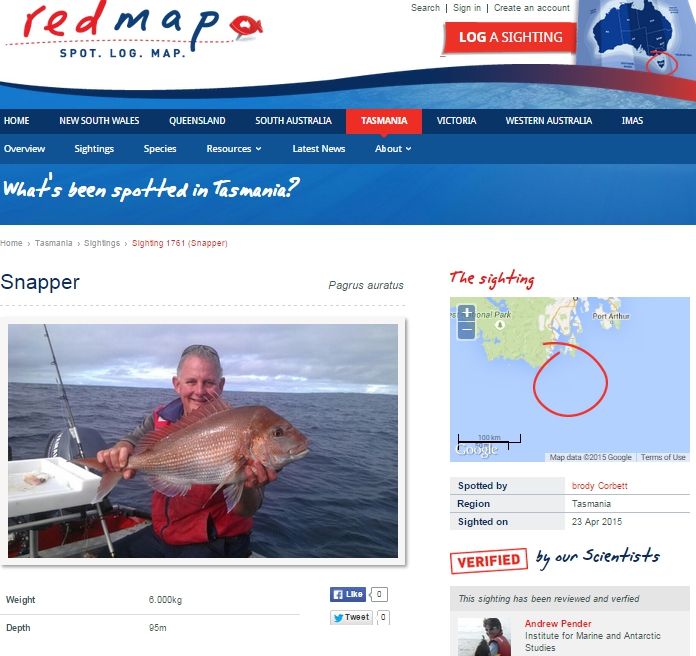
Photo above: An example of a sighting displayed and mapped on the Redmap website: this one is a snapper caught south of Hobart and well out of its usual range. Mapping is done with a 10km ’buffer’ so we don't give away your favorite fishing spots!
Over time the community photos of fish, turtles, rays, octopus, and more, will help scientists track if species are moving their usual distributions in response to changing seas and ocean warming.
As seas continue to warm around Australia more sea life are turning up further south than usual to follow their preferred sea temperatures.


